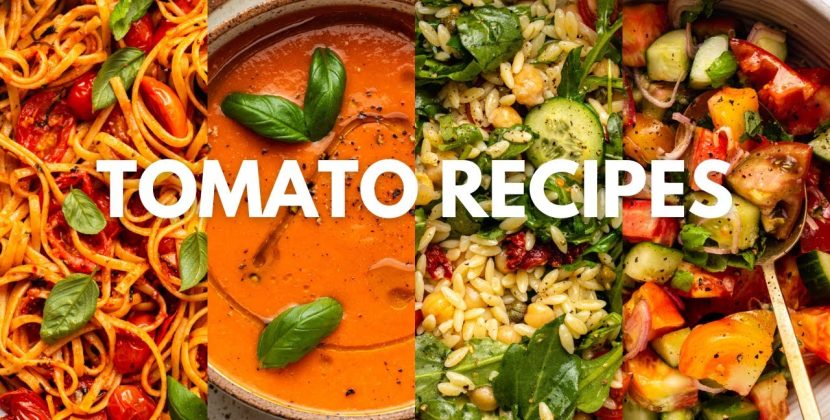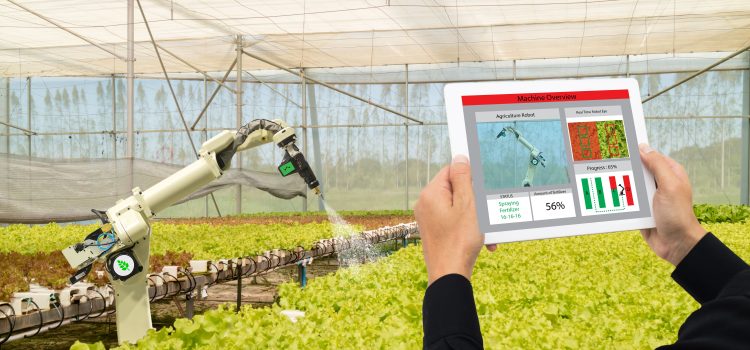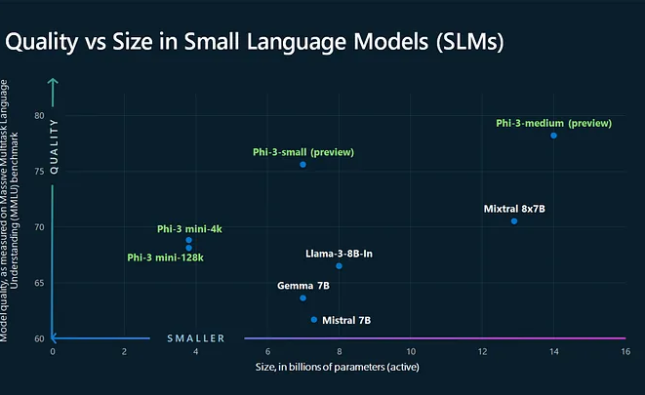The Role of IoT in Smart Agriculture
The Internet of Things (IoT) is revolutionizing the agricultural sector by transforming traditional farming methods into data-driven, efficient, and sustainable practices. With global food demand expected to double by 2050, IoT technologies are proving vital in ensuring agricultural productivity while minimizing environmental impact. Here’s an exploration of how IoT is reshaping agriculture, its benefits, and real-world applications.
Understanding IoT in Agriculture
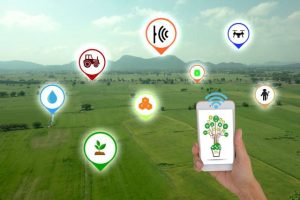
IoT in agriculture involves the integration of smart devices and sensors to monitor and manage various farming processes. These devices collect real-time data on weather, soil conditions, crop health, livestock behavior, and equipment performance, enabling farmers to make informed decisions.
By leveraging advanced tools such as cloud computing, AI, and machine learning, IoT-driven systems provide actionable insights that enhance operational efficiency and sustainability.
Key Benefits of IoT in Agriculture
- Enhanced Precision Farming
IoT sensors gather localized data, helping farmers precisely manage irrigation, fertilization, and pest control. This approach optimizes resource use, increases yields, and minimizes waste. - Cost and Resource Efficiency
Technologies like automated irrigation systems and predictive maintenance tools reduce water and energy consumption. According to the FAO, smart irrigation alone can save up to 30% of water while boosting productivity. - Improved Livestock Management
IoT-enabled wearable devices monitor livestock health, behavior, and location. For instance, systems like Cowlar alert farmers to potential health issues, reducing veterinary costs and enhancing productivity. - Risk Mitigation
Real-time monitoring and predictive analytics help farmers respond proactively to weather changes, disease outbreaks, or equipment failures, ensuring stable production. - Sustainability
IoT facilitates environmentally friendly farming by reducing the use of water, pesticides, and fertilizers while promoting soil health.
Case Studies and Applications
- Smart Irrigation Systems
CropX has developed IoT-enabled systems that monitor soil moisture and weather conditions to optimize water use. Farmers using these systems report reduced water consumption and improved crop yields. - Greenhouse Automation
IoT platforms like Growlink automate greenhouse environments by controlling temperature, humidity, and light levels. This creates optimal growing conditions while reducing energy use. - Drones for Monitoring
IoT-equipped drones provide high-resolution aerial imagery for analyzing crop health, soil conditions, and field variability. This technology enables large-scale monitoring and rapid identification of potential issues. - Livestock Tracking
In the Netherlands, IoT devices have streamlined dairy farming operations by monitoring cows’ health and productivity, leading to a significant increase in milk yields.
Emerging Trends
- AI Integration
Combining AI with IoT enhances predictive analytics. For instance, systems can recommend planting schedules or identify pest risks based on historical and real-time data - Autonomous Machinery
Robotic tractors and drones are increasingly automating tasks like planting and harvesting, reducing labor costs and improving precision. - Blockchain for Food Traceability
IoT combined with blockchain ensures complete transparency in food production, from farm to table. This enhances consumer trust and ensures compliance with food safety standards. - Edge Computing
Real-time data processing at the “edge” of IoT networks minimizes latency, enabling immediate action for tasks like irrigation adjustments or pest control.
Global Impact and Future Prospects
Countries worldwide are adopting IoT to address specific agricultural challenges. For example:
- In India, smart irrigation systems have significantly reduced water wastage.
- The Netherlands, a leader in precision farming, uses IoT to maximize productivity on limited arable land.
As global food demand rises and climate challenges intensify, IoT’s role in agriculture will continue to grow. Innovations in AI, robotics, and sustainability-focused technologies promise a future where farming is not only more efficient but also environmentally responsible.
IoT in agriculture represents a crucial step toward a smarter, more sustainable future. By empowering farmers with data and automation, these technologies are ensuring that the world can meet its food needs without compromising on resources or ecological health.
Future Impact of IoT in Agriculture
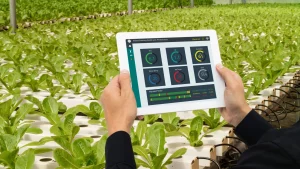
The future of IoT in agriculture promises a profound transformation in how food is produced, distributed, and consumed. Here’s what lies ahead:
Meeting Global Food Demand
By 2050, the global population is expected to reach nearly 10 billion, requiring a 98% increase in food production. IoT technologies, integrated with AI and robotics, will enable hyper-efficient farming methods, optimizing every step of the production process.
Advanced Automation
Autonomous tractors, drones, and robotic harvesters will increasingly replace manual labor, ensuring consistent quality and productivity. These machines will work in harmony with IoT systems, minimizing human intervention while boosting precision.
Data-Driven Agriculture
Predictive analytics powered by IoT and big data will allow farmers to anticipate challenges such as climate variability and market fluctuations. This will help align agricultural practices with economic demands and environmental goals.
Climate-Resilient Farming
IoT can aid in developing adaptive strategies for climate change by monitoring weather patterns and enabling resource-efficient practices. Precision agriculture will help mitigate adverse environmental impacts while ensuring stable yields.
Sustainable Practices
IoT will promote sustainability by reducing the overuse of resources like water and fertilizers. Smart systems will also monitor soil health and biodiversity, ensuring long-term agricultural viability.
Food Supply Chain Transparency
Blockchain and IoT integration will enhance food traceability, enabling consumers to verify the origin and quality of agricultural products. This will strengthen trust in the global food system and reduce food fraud.
Conclusion
IoT is at the forefront of the agricultural revolution, bringing efficiency, precision, and sustainability to farming practices worldwide. From optimizing resource use to enhancing productivity, IoT technologies empower farmers to tackle the pressing challenges of feeding a growing population while preserving the environment.
However, widespread adoption faces hurdles like high initial investment costs, technological literacy gaps, and data security concerns. Addressing these challenges will require collaborative efforts between governments, technology providers, and the agricultural community.
As IoT continues to evolve, its integration with advanced technologies like AI, robotics, and blockchain will unlock new possibilities. The ultimate vision is a smart agricultural ecosystem that ensures food security, promotes sustainability, and supports economic growth for farmers globally.

